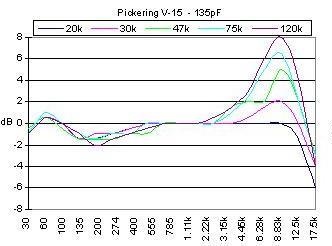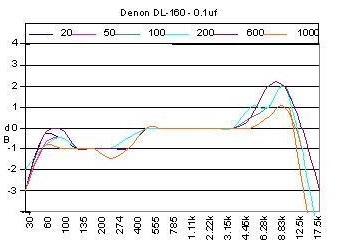Loading your Cartridge for better listening
Your Record Reproduction System operates in two energy domains, one mechanical and the other electronic. There are two interfaces in the system where transducers do energy conversion from one domain to the other and back. The first is your cartridge; the other is your loudspeaker or headphone. This paper is about the Cartridge end of the chain of events that gives you music.
Your cartridge takes mechanical energy from the moving record groove wall converting those mechanical energy variations into an electric copy through the use of a magnetic field. This energy transition is a 2-way portal; you move the stylus and electricity comes out or you can put electricity into the cartridge and the stylus will move. This whole process, stylus-to-wires, doesn’t work perfectly because there are places that energy gets diverted only to reappear later, time delayed, phase shifted, altered or lost. Part of this system, the load on the cartridge (your preamp input), can in effect reflect energy effects back into the stylus. This loading is in the form of the linear effect of the resistance (R) the cartridge ‘sees’ from the load and the non-linear effect of the capacity (C) the cartridge ‘feels’ from the loading proceeds. It all gets very complex and in the end changes the sound or “timbre” of the cartridge.

Because cartridge makers don’t build preamps and vice-versa .some convention was needed for interfacing compatibly between the two which became a standard loading guideline. For Moving Magnet (MM) it is 47 kOhms with about 200-300 pf in parallel, for Moving Coil (MC) it is 100 ohms.
A result of all this is that loading changes Timbre of the cartridge. There has been an effort to describe and predict these changes through the use of cartridge simulations using computers. Here is an example of such a simulation for an idealized cartridge. Because these simulations are not being based on reality this is a gross oversimplification , which leads you to think that the sonic effect of changing the loading is like a tone control of days past.

At this point the technical narrative must give way to reflection on personal experience. As I adjusted the two variables, Resistance and Capacity, I heard changes in the sound-scape (space) and Timbre of each. It was not about the relationship between the highs and lows as with a filter. It went far beyond that. If it had just been general high-end frequency response as the simulation suggested the changes would have been dimensionless. But it wasn’t that simple and after looking at the graphs I started to understand what was happening. It became quite apparent that there is possibly a ‘sweet setting’ for each record. All this is occurring way up front in the audio ‘food chain’. As a result little changes here are effective all the way down the line to where the music illusion occurs in my mind. In other words one could simply ‘tweak’ the entire system for each record mastering and pressing.
As we could find no information concerning real records and cartridges, we ran tests with both a MM and MC cartridge using our new Black Swan preamp with passive RIAA and front panel fully adjustable cartridge loading. Here is the comparison of the output for each test frequency for the V-15 design MM and then the Denon DL-160 high output MC cartridge. I held the capacity fixed and varied the load resistance.

Moving Magnet

Moving Coil

Moving Coil
Interesting! Note the ‘action’ from 1 kHz on down. The loading is affecting the low-frequency output as well as the high frequency. I don’t think these are electronic in source. I would suggest that we are seeing the effects of the mechanical system from the record groove wall to the coil in the magnetic field. On the low end the fundamental note of each musical instrument or singing voice is modified with respect to its harmonics by both amplitude and phase. Phase shifting is time shifting. A 2-dB amplitude difference is about 25 degrees phase shift.
For a musical note, say a Middle-A or 440 Hz that is a time shift of up to 1½ cycles which equal an apparent distance of about 5 inches. This says that every couple of cycles it will be 180 degrees out of phase with both the second and up harmonics. What does that sound like? The most extreme example I know of is on the Doobie Brothers Toulouse Street Album, the cut Listen To The Music where they do this intentionally to the drums at the bridge transition points. Less radical shifting of phase in harmonics comes under the heading of Timbre.
At high frequencies the same phenomena occurs but with greater phase issues. The flat areas in the high-frequency side suggests small multiple resonances occurring at different frequencies, again probably from the mechanical properties of the cartridge.
So what does all this mean? It means that there is no solace offered here. You are on your own. Once you have the front-end cartridge-loading tool, you can tame and tweak the sound of your cartridge to best match the mechanics of your system and the pleasure of your ear. It is the tool for you to use to unlock the art on the vinyl disc. This is about what you like and loading the cartridge is about tuning in on the magic of Hi-Fi.
